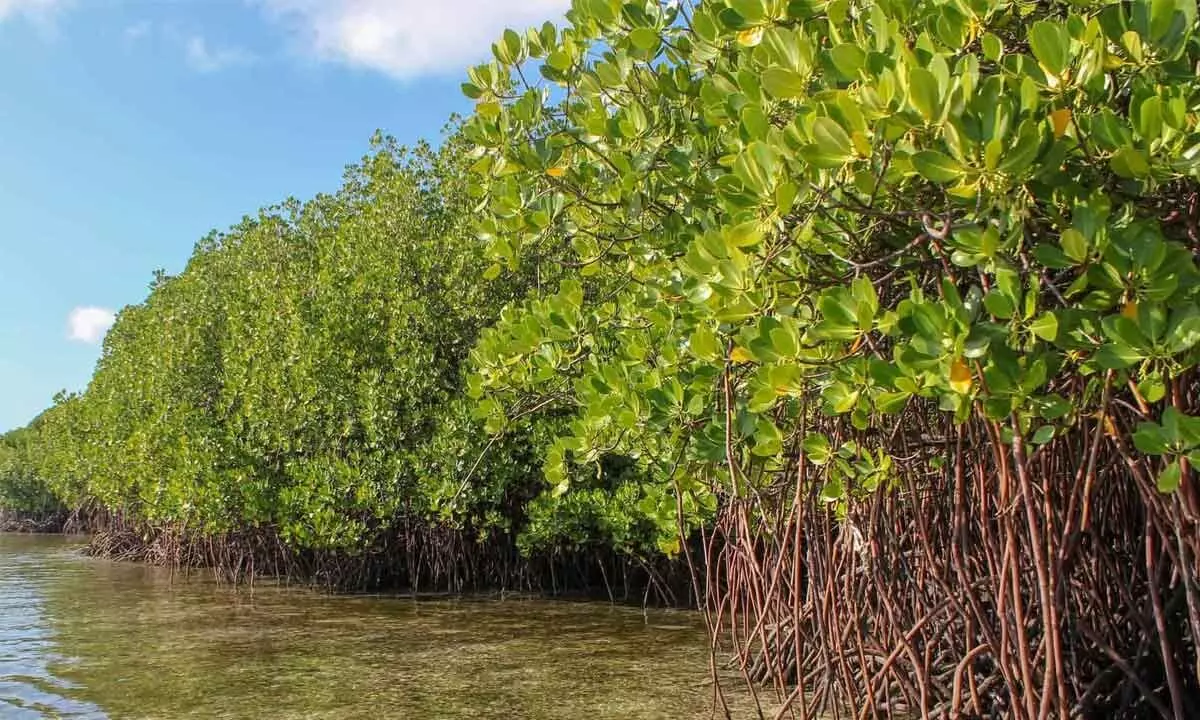Mangrove rejuvenation project in AP hangs in balance

Bushy plants act as ‘bio-shield’ during tsunamis, cyclones
Nellore: Though Andhra Pradesh is known for cyclones, tsunamis and storms, none of the successive governments in the last 12 years had paid any attention to provide a 'bio-shield' along the coastline.
It is more than a decade since the scientists gave a proposal to the state government for planting a vegetation belt along the coastline. It seems to have got lost in the dense forest of the files of the Forest department.
It may be recalled that in 2004 tsunami, 26,000 people died of which 16,000 were from India. Nellore witnessed 20 deaths close to Chennai when huge tidal waves hit the coast close to the Bay and some areas 0.3 km away.
It was the mangroves and other bushy plants which saved most human lives and property during the catastrophe.
After the tsunami, the Forest department had proposed to take up a bio-shield project in south coastal districts for protecting rich environs. Initially, it was proposed to rejuvenate some 500 acres of degraded mangrove forests between Guntur and Nellore districts. Officials decided to obtain high-resolution satellite data for bio-mapping the entire coast to plan the plantation activity.
The department had also chalked out three-pronged strategy such as vegetating all reserve forest areas within their control; involve local institutions where they hold large areas along the coastline; and involve NGOs in coastal mandals for creating awareness on protecting mangroves and other flora.
Across the state, the loss of mangroves was estimated as 2,838 hectors. It was converted for shrimp farming.
Nellore and other districts have three-four varieties of mangroves that spread over a large area in the swamps. In Nellore, Chippaleru, Kadapalem, Annagaripalem, Kondurupalem, Peddathota, Chinathota, Burada Dibba, Malipedu Vagu, Cholladoruvu, Chudimoti Kayya, Dugarajapatnam, Pudirayadoruvu, Krishnapatnam, Peddapalem-Ponnapudi, Iskapalli, and other coastal areas have these swamps. In fact, Laila cyclone impacted many coastal areas where mangroves degraded severely.
The mangroves have existed since 1950 and officials said but they got destroyed and land was converted for commercial use.
A two-member Central Empowerment Committee (CEC) accompanied by 50 state-level officials from various departments like revenue, forestry, irrigation, roads and buildings visited the coastline in 2014 to study the status of the mangroves. Still, the proposal has been kept in cold storage.















